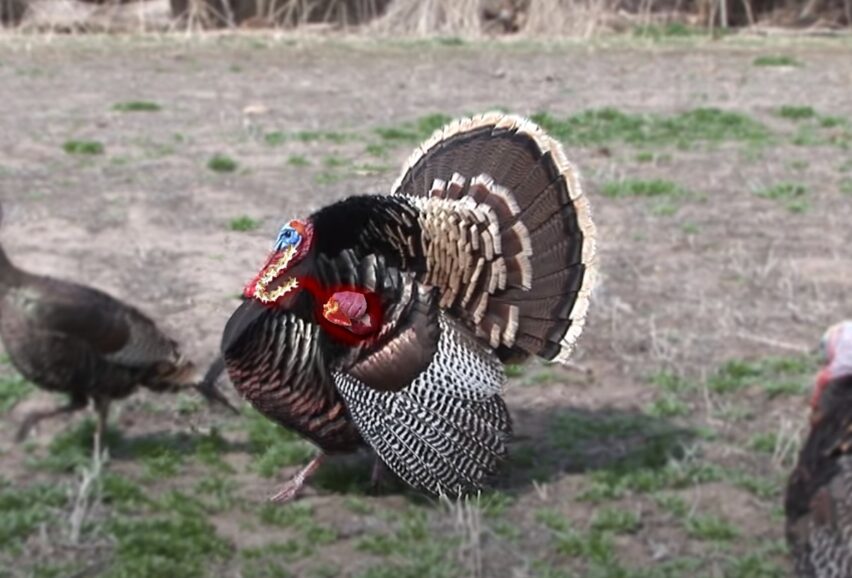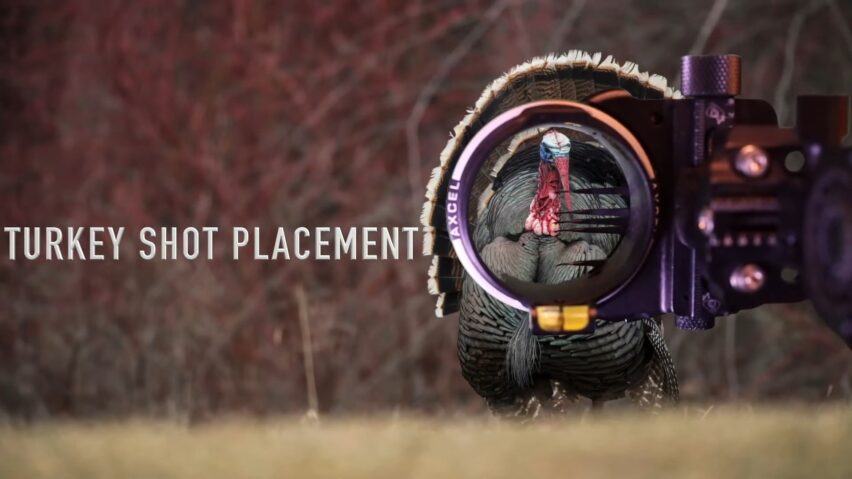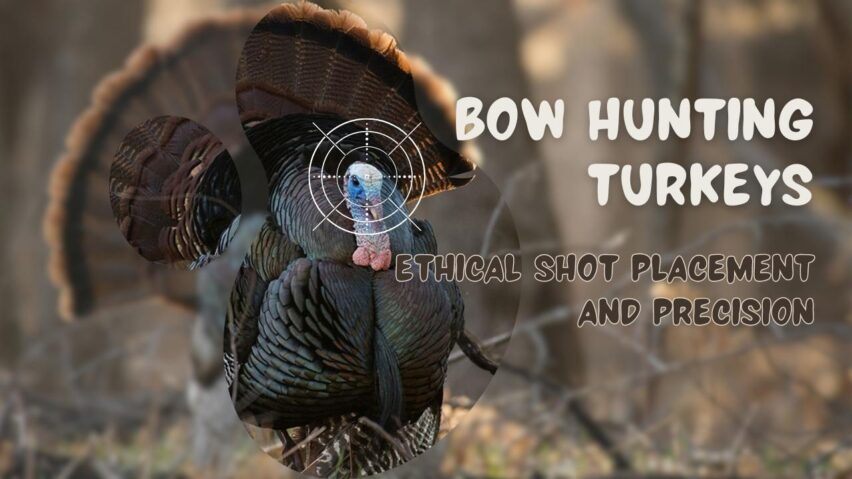The pursuit of wild game with a bow requires precision, practice, and a deep respect for the animal. In this article, we focus on the intricacies of successfully and ethically harvesting turkeys using archery equipment. It’s an endeavor that combines the age-old traditions of hunting with the sophistication of modern archery.
The aim, both metaphorically and literally, is to ensure an ethical and effective harvest. Ethical hunting emphasizes minimizing the suffering of the game and ensuring a swift, clean harvest. Mastering shot placement for a quick and humane kill is paramount to ethical turkey hunting.
Understanding Turkey Anatomy

To ensure proper shot placement when hunting turkeys with a bow, a fundamental understanding of the bird’s anatomy is necessary. Unlike larger game, a turkey’s vital areas are small and well-protected. A well-placed shot in these areas can result in a quick and humane harvest.
Key anatomical features to target include the heart and the lungs. These are situated slightly forward of the midpoint of the bird’s body. However, due to a turkey’s dense feather coverage and small size, these vital areas can be difficult to target accurately. A comprehensive understanding of these locations helps improve your chances of ethical and effective shot placement.
Preparing for the Shot
Before you embark on a turkey hunt, it’s critical to hone your archery skills to ensure a high level of accuracy. Practice is the cornerstone of ethical and effective hunting. Through regular and repeated practice, you can increase your ability to place your shots accurately, leading to more successful and ethical hunts.
Optimizing your bow setup is another crucial aspect of preparing for the shot. Your bow should be tuned to your specific requirements, including draw length, draw weight, and arrow selection. A well-tuned bow can enhance your accuracy, power, and overall hunting success.
Shot Placement Techniques
Understanding the most effective shot angles and positions is key for ethical turkey hunting. Certain angles offer a clearer path to the bird’s vital areas, resulting in a more humane kill. For instance, broadside shots present an optimal angle for reaching the vital organs.
A broadside shot refers to when the bird’s side is fully exposed to the hunter, allowing a clear path to the heart and lungs. Such a shot can result in a quick, humane harvest due to the immediate impact on these vital organs. Proper positioning and patience are often required to wait for this opportunity.
Targeting the Vital Areas
Targeting the vital areas is the key to ensuring a swift, humane harvest. As mentioned earlier, these areas on a turkey are predominantly the heart and lungs. Precisely hitting these regions can lead to an immediate drop or a short, humane death run.
Visual aids can significantly enhance understanding of the target zones. Diagrams, videos, and 3D models of turkey anatomy can provide a clear understanding of where the heart and lungs are situated, helping archers visualize the internal pathway their arrows need to take for a successful and ethical shot.
Factors Affecting Shot Placement
There are several external factors that can influence shot placement. One of the primary factors is turkey behavior. For instance, turkeys often move their heads and necks frequently, and understanding this behavior can help you predict the bird’s movements and improve your shot accuracy.
Distance is another important factor that affects shot placement. Understanding how your arrow will drop over distance and adjusting your aim accordingly is key to accurate shot placement. You should also be prepared to adapt your strategies to different hunting scenarios, including different weather conditions and terrains.
Ethics of Shot Placement

Ethics form the foundation of hunting. As hunters, it’s our responsibility to respect the game and ensure our practices cause minimal suffering. This includes striving for a swift and humane kill by focusing on accurate shot placement. Poor shot placement can lead to unnecessary suffering for the turkey and a challenging recovery process.
Ethical hunting practices extend beyond the moment of releasing the arrow. They include the decisions made before the shot, such as practicing your shooting skills, understanding the game’s anatomy, and respecting your own shooting limits and capabilities.
Shot Placement Challenges and Solutions
Despite your best preparations, you might encounter challenges when attempting to place an accurate shot. Turkeys are small animals with dense feather coverage, which can make the target areas difficult to visualize. Plus, they are often on high alert in the wild, making them quick to react and move unpredictably.
To overcome these challenges, invest time in understanding turkey behavior and studying their anatomy in detail. Practice shooting at 3D turkey targets, focusing on precision rather than speed. Patience is crucial. Wait for the right opportunity when the turkey presents a clear shot to its vital areas.
Tracking and Recovery
![]()
Tracking wounded turkeys is a significant part of ethical hunting. Once a shot has been made, it’s crucial to track the bird and ensure a quick recovery. This reduces the chance of prolonged suffering for the bird and demonstrates a respectful approach to hunting.
Effective tracking often involves blood trailing. Understanding the different colors and patterns of blood can give you clues about your shot’s impact. Keep in mind that ethical hunting practices should be maintained during the tracking process, ensuring you prioritize a quick and humane recovery above all else.
Shot Placement for Special Situations
Unique hunting situations, such as hunting from a ground blind or shooting at varying distances, often require specialized shot placement considerations. These scenarios can affect your shooting angle, visibility, and distance to the turkey, altering the way you aim your shot. In these situations, adjust your aim accordingly.
For example, when shooting from a ground blind, you may need to aim slightly lower due to the lower shooting angle. When shooting at longer distances, understanding your arrow’s trajectory and the effect of gravity will help you raise your aim point to compensate for arrow drop.
Practice and Skill Development
Consistent shot placement requires regular practice and continuous skill development. Regular target practice, both at static targets and moving 3D models, can help hone your accuracy and build confidence in your shooting ability.
Engaging in archery drills and exercises can also improve your shooting skills. Practice drawing your bow from different positions and angles, simulating real hunting scenarios. This dedicated preparation can make a significant difference in your ability to place ethical, effective shots on turkeys in the field.
Conclusion
Mastering the art of shot placement when hunting turkeys with a bow is a combination of understanding turkey anatomy, practicing your archery skills, and adapting to various hunting scenarios. The overarching principle guiding all these aspects is the ethics of hunting – ensuring a swift, humane harvest that respects the game and the hunting tradition.
It’s our hope that the tips and guidance provided in this article will serve as a valuable resource in your turkey hunting journey. Remember, every hunt is an opportunity to learn, improve, and deepen your respect for the wild. With ethical practices and skilled shot placement, you can enjoy a rewarding and respectful relationship with this noble bird

